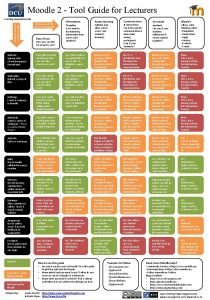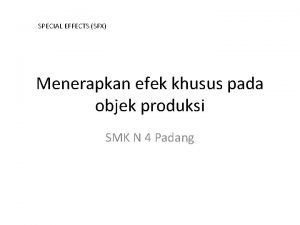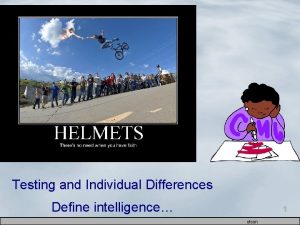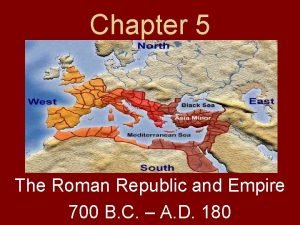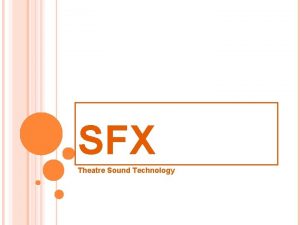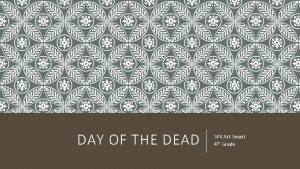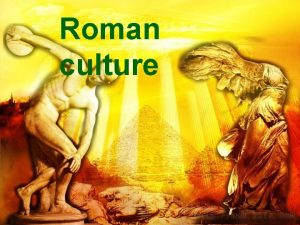Roman Art 6 Grade Art Smart SFX Roman















- Slides: 15

Roman Art 6 Grade Art Smart SFX

Roman Art What did they make? Roman art encompasses private art made for Roman homes as well as art in the public sphere. The elite Roman home provided an opportunity for the owner to display his wealth, taste and education to his visitors • Sculpture • Decorative mosaics • Bronze figurines and silver bowls. The subject matter ranged from busts of important ancestors to mythological and historical scenes, still

Roman Art - Geography • Roman art is a blend of many region that became incorporated into the Roman Empire • Art from many different cultures blended together absorbed national and regional traits • Can you name the cultural influence on Roman Art?


Regional Influences � Etruscans �Before the Roman Empire Etruscans ruled the greater part of Italy �They were major contributors to the influence on Roman Art � Portraiture � Metal work � Jewelry � Greeks �Architecture �Marble Sculpture �Mural paintings � Egypt and Syrian Coast �Glassmaking �Textiles

Romans � Native taste and talent for organization enabled them to develop a body of art that was uniquely Roman � Building on Greek style idealized sculpture – Realistic Portraiture �Funerary images �Records illustrious ancestry �Republican statesman � Architecture �Engineers, architects and builders constructed roads and bridges for military and expanding population �Romans invented concrete � Durable vaults � Arches spanning vast spaces � All citizens of the Roman Empire became Roman

Etruscan Hand Mirror Etruria Created - 460/450 Bronze, poured into a disc shaped mold Cooled decorative areas engraved into the metal Tool: sharp engraver or chisel Polished to a high sheen Goddess EOS carrying her dead son Memnon Killed during the Trojan War Women Etruscan woman were treated as equals, enjoyed freedom and power

Architectural Relief Sculpture - The Gigantomachy Struggle between and the Giants and the Olympian gods, who were led by Zeus. A god and goddess capture a Giant, depicted with wings and serpent-like features, to deliver the final blow in this epic battle. These three animated figures were probably once part of a series of ornamental covers called antefixes, which were placed along the lowest row of roof tiles on a small building, probably a temple. Etruscans often decorated their buildings with brightly colored sculptural compositions based on Greek mythology. � This could be a decorative part of a small temple � Colorful

Portraits - Coins With the establishment of the Roman Empire , there was demand for portraits of the Roman emperor and his family. Art + Politics were connected – enhancing public images Coins were carved into hard metal gold and forced by upper and lower dies striking Emperor 57 or 58 AD

Portraits – Coins Nero 66 or 67 AD

Portrait Marble Head of Emperor Hadrian Rome, 2 nd-3 rd century AD Portrait head of the Roman emperor Hadrian (117 -138). • Carved in the round from fine-grained white Roman marble with finely polished surfaces. • The 33 cm. height of this piece is slightly larger than life size. • It powerfully depicts the emperor with his head turned slightly turned to the left, gaze fixed straight in front of him. • Finely engraved features. With Hadrian begins a series of imperial Roman portraits bearded in imitation of the Greek philosophers. A wonderful classic sculpture that communicates the dignity and authority of

Relief of Fallen Warrior from the Shield of Athena Parthenos Around 435 B. C. , the Greek sculptor Phidias enriched the front of the shield at the side of his gold-and-ivory statue of Athena in the Parthenon with scenes of Greeks and Amazons battling in the Trojan War. In Roman times, certain figures from this complex struggle were lifted out of their original context and enlarged to become decorative reliefs for the walls of a colonnade or courtyard.

Fragment of a Sarcophagus 2 nd century elaborately decorated stone coffin's call sarcophagi Common themes • Greek mythology • battle motifs each laden with symbolism of tragedy and death

Tableware was revolutionized by the technique of glass blowing invented in 40 BC Once a luxury, then massed produced, treated like we treat plastic today Found in tombs Surface iridescence seen here is a result of their long burial. Minerals in the soil produced a remarkable finish not envisioned by the creator.

Creative Assignment Choice 1. Design your own coin 2. Portrait half art
 Sfx moodle
Sfx moodle Ex libris sfx
Ex libris sfx Kualitas sfx adalah
Kualitas sfx adalah Book smarts vs street smarts
Book smarts vs street smarts Smart two men are
Smart two men are Interserf
Interserf Everfi module 2 smart shopping answers
Everfi module 2 smart shopping answers It's not how smart you are
It's not how smart you are What is the next letter? a z b y c x d
What is the next letter? a z b y c x d Street smart vs book smart quotes
Street smart vs book smart quotes One smart man he felt smart
One smart man he felt smart Cursus honorum
Cursus honorum Roman republic vs roman empire
Roman republic vs roman empire Servier medical art
Servier medical art Raw score transmutation table
Raw score transmutation table Doctor, lawyer, indian chief jump rope
Doctor, lawyer, indian chief jump rope
